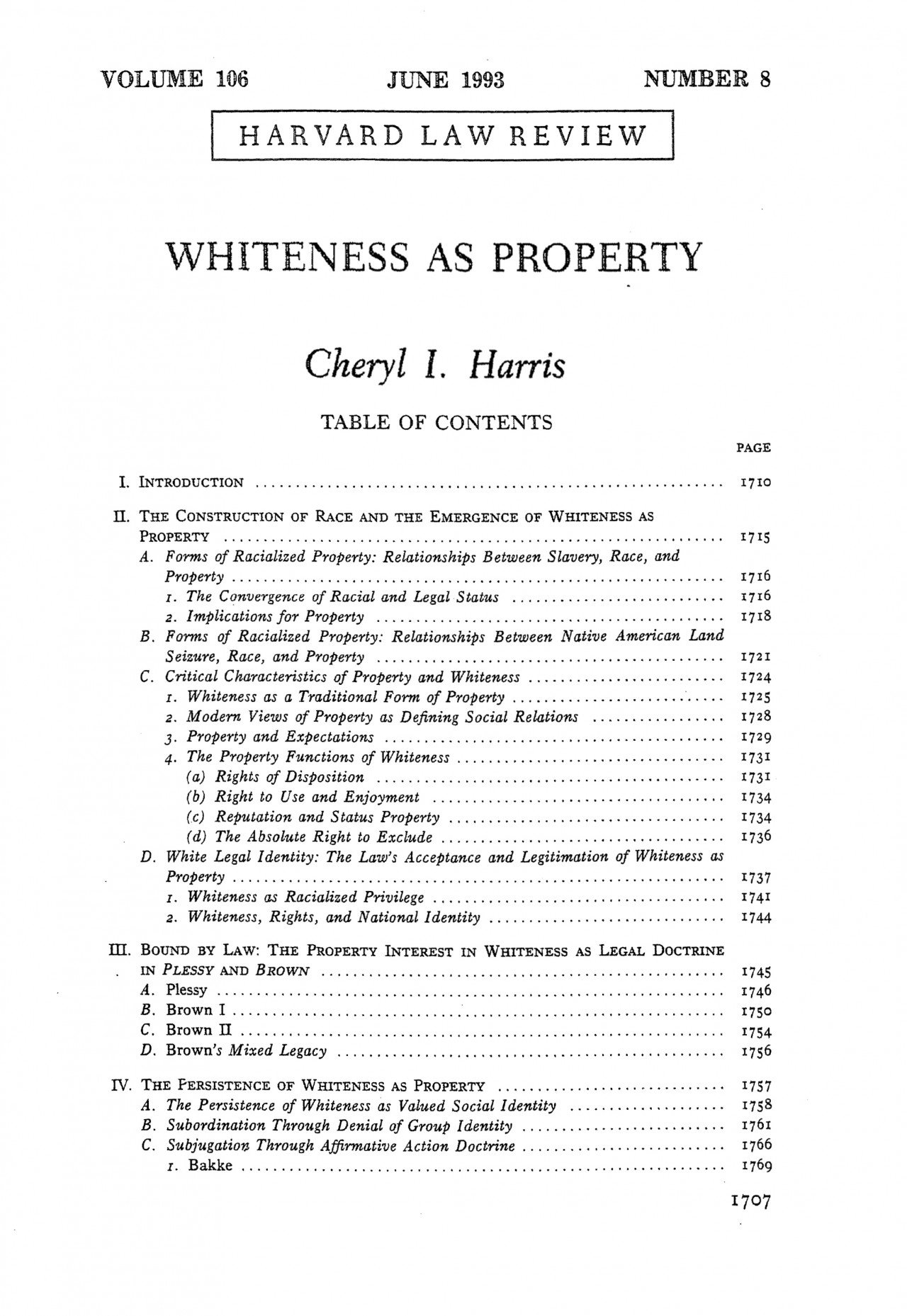Whiteness as a Property Right
White people have historically received benefits that come from nothing more than their being white. The are tangible benefits that come along with being white, including and in addition to the settled expectation that being white will come with benefits. These benefits have historically been economic, social, legal, and almost every other form of rights that dictate our everyday lives.

By the end of this session, you should be able to:
Define "property" in the context of CRT
Explain how whiteness is a property right
Describe the basic privileges that constitute property right of whiteness
Explain the connection between public health disparities and white supremacy
Describe the connection between public health disparities, public policy, and social morality
Define the social conditions, public policies, political barriers, and social morality that produces public health disparities
Session Learning Objectives
Watch Lecture
Watch the content lecture below. The purpose of the lecture is to tie in all of the session’s content and to align the content with the session’s learning objectives.
Review Content
There are multiple ways to access the information for this session. There are films, writings, and reflection questions. You get out of this course what you put into it.
Complete Reflections
These course sessions are tailored to your time and effort capacity. Completing the reflections based on whatever information you are able to access is important.
Session Lecture
Watch this lecture from “the Professor,” Dr. Thomas D. Allison, Esq., on the theory of Whiteness as a Property Right. Dr. Allison is a professor, an attorney in five states, a nonprofit executive, and has a doctorate in public administration.
Suggested Text: Whiteness as Property, by Cheryl L. Harris
Supplemental Lecture
The YouTube video below by Mike Mena does an excellent job of breaking down Harris’ 1993 article “Whiteness as Property.” Reading the article along with watching this video is highly suggested.
Additional Suggested Reading: White Fragility: Why It’s So Hard for White People to Talk About Racism, by Robin Diangelo
Amend
The Amend series does a fantastic covering history, law, and public policy as it relates to race relations in the United States. This particular episode discusses white backlash and opposition to racial progress.
Session Reflection Questions
In a journal, write a reflection of what you have learned from this material, covering at least the following elements:
What benefits have white people received just for being white, i.e. what are the differences between the two Americas described by Dr. King?
What are the public health consequences of white supremacy?
List and describe (provide law and how it applied) at least five major policy areas where minorities have been denied access to equality.
Explain the concept of “whiteness as a property right” (discuss the following concepts: definition of property, the connection between race and property, property as a bundle of rights, the property function of whiteness, settled expections of whiteness).




